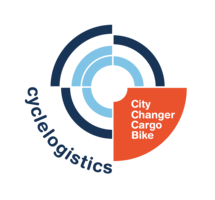
Gdynia (Poland)
Gdynia is a port city with almost 250,000 inhabitants situated in the northern part of Poland on the Baltic Sea in what is known as the Tri-City Metropolitan Area, comprising in total more than 1.2 million inhabitants. It is a young, vibrant, dynamic city and a Polish centre of economic growth. The city is continually making considerable efforts to reduce motor traffic demand in the area and has an SUMP in place since 2008.
Gdynia is a centre of maritime economy, international trade, science and academic education, culture and tourism. The city’s development strategies are closely linked with its maritime economy. It is one of the most rapidly developing Polish cities where small and medium-sized enterprises play the leading role.
According to the latest survey results the current modal split in Gdynia is as follows: public transport 50%, cars 49%, cycling 0.4% and other 0.6%. The public transport system in Gdynia is based on three main subsystems: buses, trolleybuses and suburban light rail, and can without a doubt be described as green, efficient and accessible. Noteworthy as well, 77% of all citizens live within a five-minute walking distance to a bus stop, and the bus fleet mainly consists of Compressed Natural Gas (CNG) buses and modern fleet of trolleybuses.
Gdynia’s transport policy and strategy is mainly focused on solving most relevant communication problems of the city in a truly sustainable way. This covers increasing bicycle use and multimodality, as well as improving the quality of public transport services. Achieving the strategic goals of the city is supported by the involvement in the CIVITAS network since CIVITAS I (2002-2006). Within CIVITAS I, Gdynia participated in the TELLUS project which brought about the modernisation of Swietojanska Street. This initiative featured the installation of a new, more reliable trolleybus traction, making the street a pedestrian, friendly area and increasing the quality of life for its inhabitants.
In the CIVITAS DYN@MO project, Gdynia will work to extend its activities in important fields of sustainable urban transport and focus on three themes:
- sustainable urban mobility planning
- clean and energy-efficient vehicles
- intelligent transport systems and ICT
The core of the CIVITAS DYN@MO activities in Gdynia will be to develop the SUMP elaborated within the BUSTRIP (2008) project. This will lead to a further developed into a new generation SUMP, with strong involvement of the local community and stakeholders. Under this initiative Gdynia aims at becoming a model case for Sustainable Urban Mobility Planning in Poland. A range of community project studies for priority actions identified in Gdynia’s draft SUMP will be conducted and a mobility management concept will be applied to create pedestrian areas in support of this process. A Mobility 2.0 internet platform will be set up to involve the local community and stakeholders. In addition, a Baltic Sea Region SUMP Competence Centre will be formed in cooperation with the University of Gdansk, Union of the Baltic Cities and Lund University.
To increase the attractiveness of the beloved trolleybuses in Gdynia, trolleybus lines will be extended into areas without wired infrastructure. Battery hybrid trolleybuses will be converted and tested in a residential area without public transport service. Furthermore, energy efficiency of the system will be increased with innovative supercapacitor technology.
In addition to the Mobility 2.0 platform, Intelligent Transport Systems and ICT will be deployed in Gdynia through a plan that will:
- elaborate the first three-level transport model for both individual and public transport feed in to the SUMP process,
- install a weigh-in-motion system to identify overweight trucks on the road and help ease the considerable burden on the city's environment and road damage,
- introduce an automatic traffic incident detection system at selected locations in the city to improve road safety and reduce congestion.
- test and operate a dedicated bus lane and a high occupancy vehicle (HOV) lane through ICT applications including automatic detection devices.

























